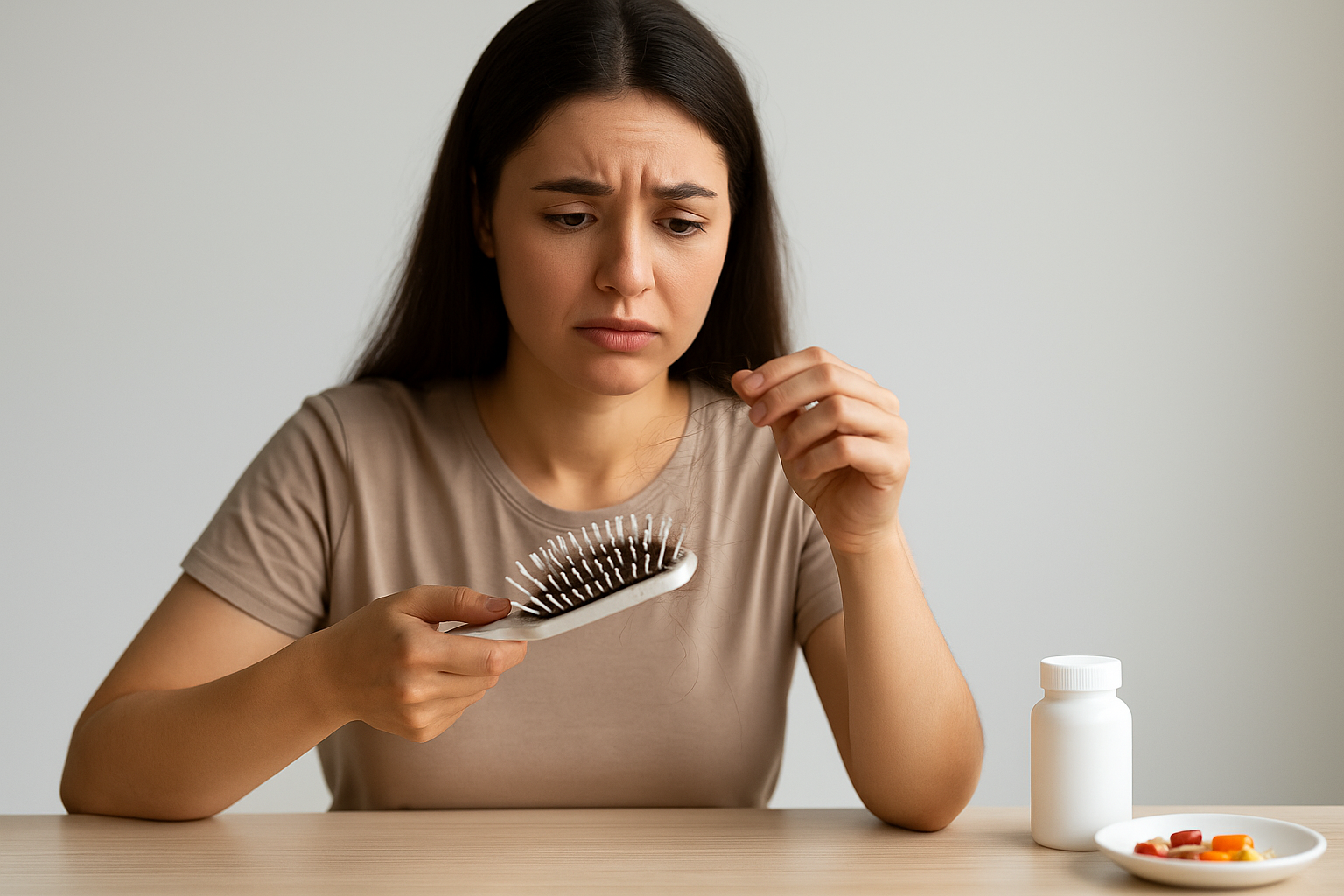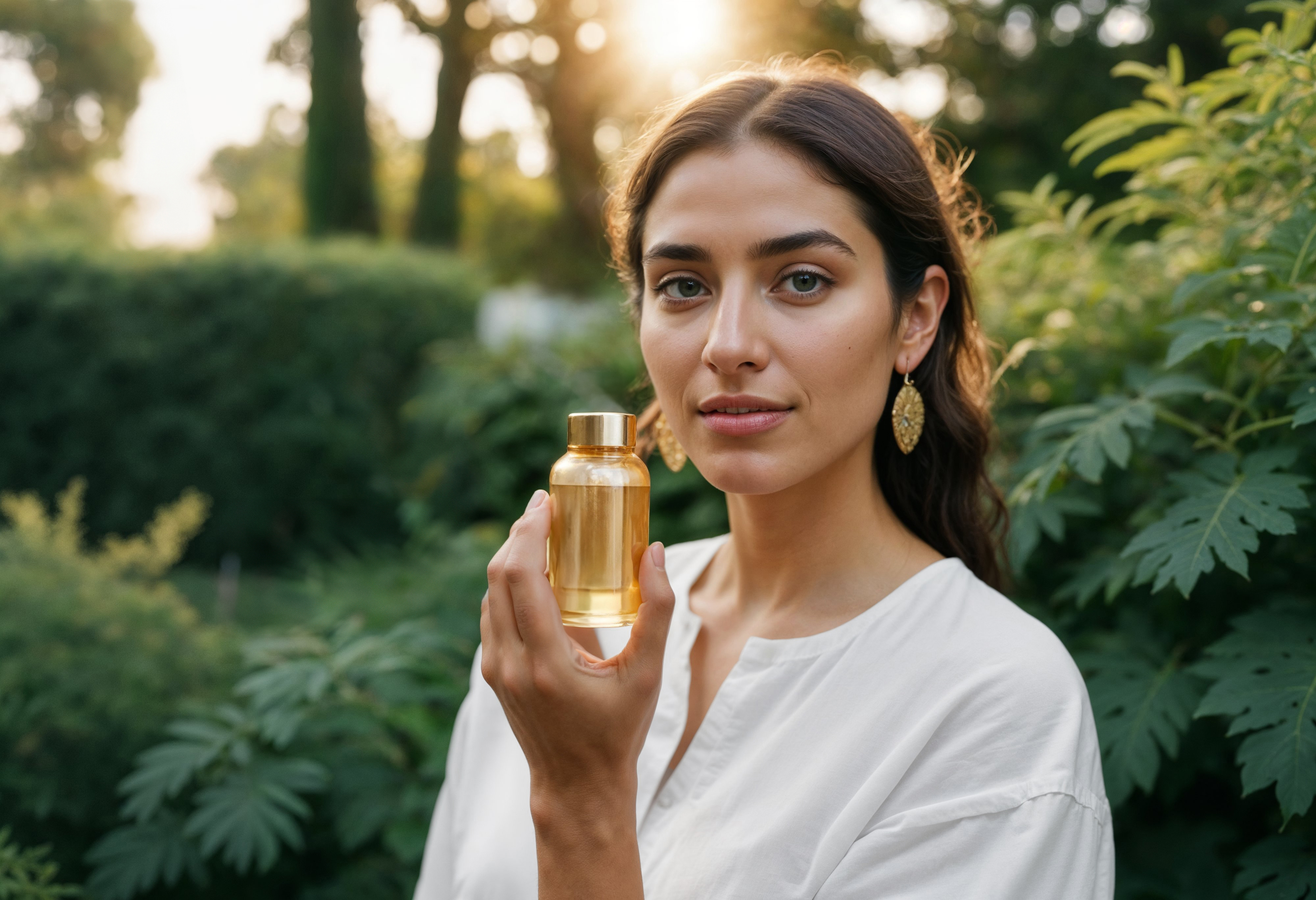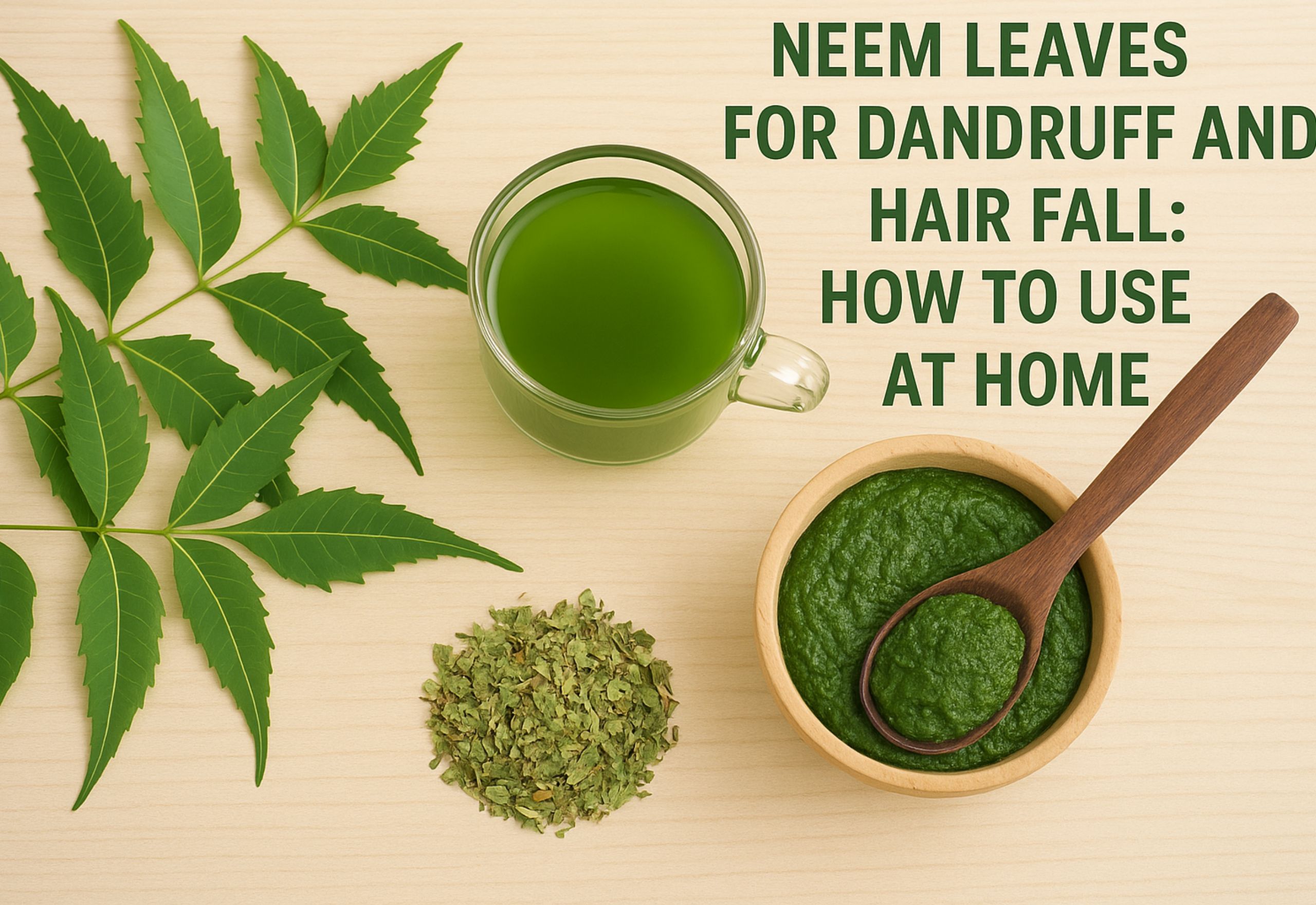Can you imagine slowly losing your hair to constant itching and flakes falling from your head everywhere? Most people don’t realize that for a lot of people, dandruff may not just be a nuisance, but it intertwines with Malassezia fungal overgrowth in combination with compromised sebum production or scalp inflammation. If not kept in check, it can endanger your hair follicles and give way to dreaded dandruff and excessive shedding.
Neem leaves for dandruff have been embraced in Ayurveda via traditional practice for centuries, not just as a home remedy, but because of their reputation as having the mindset properties and a long-sustained reputation as antimicrobials, anti-fungals and anti-inflammatories; as antifungal properties, protect against fungal growth, which decreases irritation on the scalp and promotes nuclear activity within scalp cells. This could be beneficial for scalp health, further inhibiting any way for growing, horrible dandruff, and hair loss.
Utilizing neem in simple, natural ways at home would allow consumers to achieve a natural approach to healing scalp-related conditions while improving the growth of stronger and healthier hair.
Why Neem is the Ultimate Natural Solution for Dandruff and Hair Fall:
A Short History of Neem in Hair Care: Neem (Azadirachta indica) has been an essential part of Ayurvedic scalp treatments for centuries. Fresh neem leaves have traditionally been pilfered, boiled, and added to a rinse or ground into a paste to combat itching, reduce flakes, and alleviate inflammation, and we still use them today, backed by research.
The Science behind Dandruff
Dandruff arises from an overgrowth of Malassezia yeast, overproduction of sebum, or inflammatory conditions of the scalp. As for how neem leaves for dandruff work, it has to do with the presence of unique bioactive compounds:
- Azadirachtin: interferes with fungal growth and reproduction.
- Nimbidin and Nimbin: possess potent anti-inflammatory and antimicrobial properties.
- Quercetin: an antioxidant capable of protecting scalp tissues from oxidative damage.
Your hair will benefit by reducing and controlling fungal populations on the scalp, calming irritation, and restoring balance, all without excessive dryness.
How Neem Strengthens the Hair Root
Our scalp health is largely ignored until a problem arises, such as dandruff or peeling, and irritation. Neem is a natural and potent way to replenish and balance the scalp, while helping to develop healthier hair.
- Reduces scalp inflammation and irritation: Paraguayan sassafras calms inflammation and irritation.
- Reduces microbes: Useful in reducing fungus and bacteria that cause dandruff.
- Improve circulation: Improves nutrient and oxygen to the roots of the hair.
- Strengthens follicles: Provides nutrients to encourage thicker and healthier hair growth.
- Two actions: Treats the dandruff while ensuring a fresh follicle.
Advantages of Utilizing Neem Leaves for Dandruff
Neem leaves for dandruff benefits will support hair and scalp from its long, noble history of use, and modern science, especially in understanding how to treat causes of problems rather than just hide them.
- Prevents the development of fungus: May also help modulate the yeast or bacteria that induced dandruff in the first place.
- Prevents itch: Reduces redness and soreness.
- Balances Oil: Helps to balance excess oil without stripping the scalp.
- Stimulates Roots: Promotes healthy follicle circulation.
- Prevention of dandruff recurrence: Keeps the scalp clean and physiologically balanced.
Consistent dandruff treatment with neem leaves effectively treats upper-layer and lower-layer scalp issues, delivering better flakes and less irritation, while also supporting a stronger foundation for the hair to grow.
Ways to Incorporate Neem Leaves for Dandruff at Home
We can never underestimate what benefits Neem can give to your scalp when you use it the right way. Here are three simple and easy ways to utilize it at home.
1. Neem water rinse – relieves itching and reduces scaling
What it does: Calms irritated scalp, reduces fungal activity, and reduces excessive scaling.
How to do it:
- Boil a handful of fresh Neem leaves in about half a litre of water for about 10 minutes.
- Allow it to cool completely and strain the liquid.
- After shampooing, pour it on your scalp and leave it as a final rinse.
- Repeat twice a week for optimal benefits.
2. Fresh Neem paste – clean thoroughly to the scalp
What it does: Helps remove build-up, dead skin, and control the microbes responsible for dandruff.
How to do it:
- Blend a handful of fresh neem leaves with a little bit of water and create a fine paste. Apply this paste to your scalp and focus on the itchy, flaky areas (this will be hard to do if you have long hair; once again, use your fingers).
- Apply for approximately 15 – 20 minutes and rinse with lukewarm water.
3. Neem oil massage – reinforces roots and reduces irritation
What it does: Essential fatty acids and other nutrients feed nourished hair follicles, support circulation, and reduce inflammation of the scalp.
How to do it:
- Mix 4 – 5 drops of neem oil with 2 tablespoons of coconut or olive oil.
- Gently massage on the scalp for 5 – 10 minutes.
- Leave it on for 1–2 hours before washing it off with a mild shampoo.
4. Neem and Aloe Vera Mask – Moisturising and Healing Scalp
What it does: Combines the antifungal aspect of neem with the soothing and moisturising properties of aloe vera.
How to do it:
- Add the neem paste to 2 tablespoons of fresh aloe vera gel.
- Spread evenly over the scalp.
- Leave on for thirty minutes and rinse with cool or lukewarm water.
Using these remedies continually allows you complete dandruff treatment with neem leaves, soothe irritation, and create a better educated environment for stronger hair.
Neem Remedies for Preventing Hair Loss
Continued thinning due to dandruff, inflammation, and infection causes hair shedding. If these issues are not correctly addressed and dealt with to promote healthy hair growth, shedding will only get worse for hair follicles. Neem helps to combat these issues so the hair can regrow thicker and healthier.
Neem Oil Massage – Promotes Healthy Follicle Development
- Mix neem oil with coconut or almond oil.
- Apply and massage the neem oil mixture into your scalp for 10 minutes and let it sit on the scalp for 1 hour, then wash.
- This gets the blood flowing into the scalp, feeds the roots, reduces inflammation, and suppresses DHT.
Neem Leaf Hair Pack- Cleanses and Detoxifies the Scalp
- Wash and grind fresh neem leaves to a fine paste.
- After the paste is prepared, apply the paste onto the scalp and hair and allow it to sit for 20 minutes, and then wash it off.
- The leaves detoxify the scalp by clearing buildup and preventing fungal overgrowth.
Neem Water Rinse – Maintain Scalp Cleanliness
- To make a neem water rinse, boil fresh neem leaves in water, allow to cool, strain, and use to rinse cleaned hair.
- This rinse will inhibit fungal overgrowth and soothe scalp irritation.
Regularly applying neem leaves in whatever form for dandruff will not only keep flakes under control, but also they will protect hair follicles from shedding to support healthy, stronger hair to regrow.
Best Results Tips
You will attain the best results with neem leaves for dandruff by practicing simple habits that you can implement for a healthy scalp and long-lasting changes.
- Use fresh leaves as the active compounds are greater in number.
- Stick to a schedule, apply the remedy 1–2 times each week to obtain results.
- Do not overdo it, too much neem (especially oil) can dry out the scalp too dry.
- Use suitable products: avoid perfumed, harsh shampoos and heating tools.
- Eat well, make sure to eat protein, zinc, iron, and vitamins A, D, and E.
- Minimize stress, manage stress to encourage better scalp and hair health.
If you can do the above practices while using neem regularly, you will most likely be able to manage your dandruff and create the perfect circumstances for very strong and healthy hair to thrive.
Precautions to follow when you are using neem on hair
Neem leaves for dandruff are generally safe, but if you use them incorrectly, they could (on rare occasions) cause unwanted effects.
- Patch test: Start with a patch test (use a small amount on the skin) to check for allergies.
- Don’t Overdo it: Neem and other herbs are too strong when used in high concentrations; they could possibly dry out your scalp and hair.
- Dilute the oil: Always dilute pure neem oil with a carrier oil such as coconut, olive, or almond oil.
- Prevent neem products from getting in your eyes: Even when diluted, Neem oil, especially in strong concentrations or undiluted, can irritate your eyes.
- Use lukewarm water: You do not want to use hot water, as you will be boiling the moisture out of your hair and scalp.
- Don’t consume neem: You may only consume neem with permission from a professional.
Keep these in mind to ensure that you can best make use of neem and not hurt your hair and scalp.
Conclusion
Dandruff treatment with neem leaves work effectively in controlling your dandruff naturally by removing flakes from your scalp, calming the irritation, and allowing the hair to grow healthily. Neem leaves implement their antifungal, antibacterial, and anti-inflammatory properties, where they are effective against the root causes of dandruff and hair fall. Regular use of neem leaves along with appropriate care will leave the scalp conditioned, the follicle strengthened, and allow for hair that is thicker and healthier.
Related FAQs
Q. Will neem leaves change my hair color?
No, neem leaves won’t change or modify your own natural hair color or cause your coloring to wash out.
Q. Is neem safe for persons with a sensitive scalp?
Yes, it is generally safe, and as a precaution, you should always do a patch test to rule out problems.
Q. Is it okay to use neem every day on my hair?
While it is not necessary, you can apply neem one to two times per week and achieve really good results after a few weeks.
Q. Will neem make my hair smell bad?
Neem does possess a very strong herbal odour, but a good rinse can minimize the scent.
Q. Can I mix neem with my shampoo?
Yes, neem powder or extract can be added to a mild shampoo very successfully.
Q. Is neem effective for acne on the scalp?
Yes, neem has anti-bacterial and anti-inflammatory properties that will help to relieve scalp breakouts.
Q. Is neem safe for children with dandruff?
Yes, neem is very safe in a diluted form, provided it is used under adult supervision to avoid safety issues.
Q. Can neem be used for dry weather dandruff?
Yes, neem can be supportive, but you should also use neem with moisturizer (i.e., aloe vera) to restore your scalp and hair back.
Q. Can neem make my hair stop breaking?
In general, neem should indirectly stop your hair from breaking by working to strengthen your scalp and hair follicles.
Q. Can I put neem oil and onion juice in my hair?
Certainly, but you should do a patch test on a small area first since both ingredients can be rather strong.


